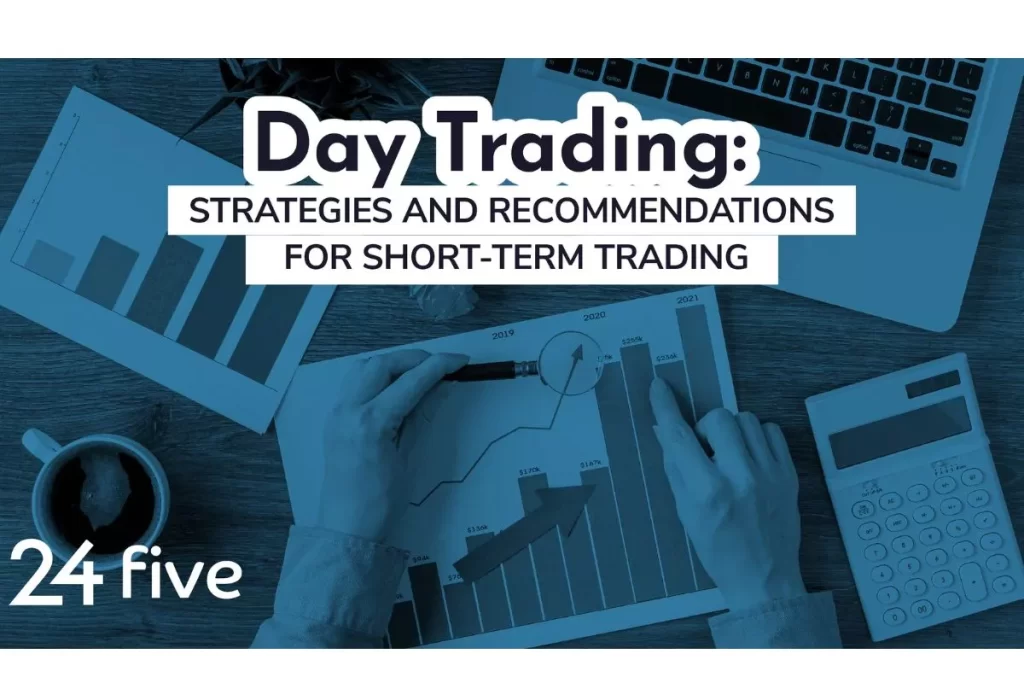Day trading is a form of trading in the financial markets that focuses on opening and closing positions on the same day. Day traders seek to take advantage of short-term price fluctuations to make quick profits. In this article, we will explain what day trading is, how it works, and share three common strategies used by day traders: scalping, fading, and momentum forex.
What is day trading?
Day trading is an investment strategy that involves buying and selling financial assets, such as stocks, currencies, or cryptocurrencies, within the same trading day. Unlike long-term investors, day traders do not hold their positions for weeks or months but seek to profit from intraday fluctuations.
How does day trading work?
Day trading requires a thorough understanding of financial markets and technical analysis. Day traders use various tools, such as charts, technical indicators, and volume analysis, to identify trading opportunities. They look for patterns and trends that allow them to quickly enter and exit positions in order to profit.
Common day trading strategies
Scalping
Scalping is a strategy that seeks to make small profits by taking advantage of very short price movements. Scalpers open and close multiple trades in a matter of minutes or seconds. They seek to capture intraday volatility and often use tick charts or very short time intervals.
Example of scalping: A scalper might open a buy position on a stock when he sees a rapid price rise and close it as soon as he makes a small profit of a few cents per share.
Fading
The fading strategy in trading involves taking positions contrary to the prevailing trend. Traders using this strategy seek to identify times when the price of an asset has experienced excessive movement in one direction and wait for the price to reverse. Rather than joining the uptrend or downtrend, traders who apply to fade seek to take advantage of corrections or reversals, selling when the price rises rapidly and buying when the price falls sharply. This strategy is based on the idea that extreme price movements tend to be followed by a correction or reversal. However, it is important to note that fading carries certain risks and requires careful analysis of market patterns and proper risk management.
Forex Momentum
The momentum forex trading strategy is based on taking advantage of the strength and direction of market trends. Traders who apply this strategy seek to identify assets that show significant upward or downward momentum. They seek to buy when the price is rising and sell when the price is falling, with the expectation that the trend will continue. They use technical indicators and price pattern analysis to identify entry and exit opportunities. The momentum forex strategy requires proper risk management and the ability to make quick decisions based on market movements.
General recommendations for day trading
- Education and practice: Before you start trading, it is crucial to acquire solid knowledge about financial markets, technical analysis, and trading strategies. In addition, practicing with a demo account can help familiarize you with the trading platform and hone your skills without risk.
- Risk management: It is essential to set stop-loss limits and use stop-loss orders to protect against adverse market movements. Proper risk management is essential to preserve capital and avoid significant losses.
- Planning and discipline: Before making any trade, it is advisable to have a well-defined trading plan. This includes setting profit targets, entry and exit levels, and sticking to them. Discipline is key to avoiding impulsive trading based on emotions.
Example
Suppose a trader is trading in the stock market and has identified a particular stock that is showing strong short-term upward momentum. After performing a technical analysis and confirming his analysis, he decided to apply a day trading strategy to take advantage of this opportunity.
The trader establishes a trading plan with a profit target and a stop loss. Based on his analysis, he decides to buy the stock as soon as the price exceeds a certain resistance level, which would indicate a bullish signal. He sets his stop-loss, an order that will be executed if the price falls below a predefined level to limit his losses in case of an adverse movement.
Once the buy order is executed and the trader has the position open, he monitors the price movement closely. If the price begins to move in his favor and reaches his predetermined profit target, the trader sells the stock and closes the position, locking in his profits and moving on to the next one. In general, intra-day traders open between 30 and 50 positions in a trading day.
However, if the price moves against him and reaches his stop-loss limit, the stop-loss order is executed and the trader exits the position, thus limiting his losses.
It is important to note that day trading involves quick decision-making and proper risk management. In addition, each trade may last only a few hours or even minutes, and traders often make multiple trades in a single day to accumulate profits.
Remember that trading involves risk and it is advisable to have solid knowledge, experience, and proper risk management before engaging in day trading.

